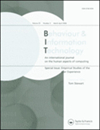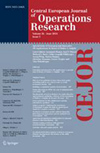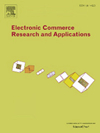期刊简介
Nowadays, in the age of information technology and the internet, the creation and maintenance of business models has to consider the latest developments in information technology to ensure competitiveness and long-term success of the enterprise. The aim of Information Systems Management (ISM) is to integrate information technology into business models and business processes to explore its potential to meet the business goals. Many international journals in the field of information systems (IS) or information management (IM) focus primarily on the quantitative analysis of information systems phenomena, especially through the use of empirical studies. However, research on qualitative analysis, development, and deployment of information systems is not covered sufficiently by the existing international IS journals. Therefore, the journal Information Systems and e-Business Management (ISeB) focuses on the core tasks of Information Systems Management, the conceptual analysis, design, and deployment of information systems, as well as on all e-business related topics. 1. Editorial objective The central aim of the journal ISeB is to publish original, well-written, self-contained contributions that elucidate novel research and innovation in information systems management and e-business which advance the field fundamentally and significantly. Published quarterly, the journal will: - Provide a vibrant forum for both academicians and industry specialists to explore the information systems and e-business management field - Bring innovative research on all aspects of information systems management from analytical, behavioral and technological perspectives - Enable rapid dissemination of latest research and innovation, supported with a double-blind peer review process. 2. Nature of topics The function of information systems management is the use of information technology (IT) to meet the information requirements of a company. Core tasks of ISM are the generation of project ideas (e.g. identification of business opportunities enabled by new information technologies), conceptual analysis, design, and integration of information systems. Submissions to ISeB should have a clear business focus and use appropriate information systems methodologies. They should either be founded on theory or should have proven their value based on prototypes and their beneficial application in the field. The general applicability of the concepts presented is strictly required. Case studies are welcome, if the insights presented allow general applicability. Moreover, empirical studies are welcome if clear research questions with relevance to the field of information systems and e-business management are given and the studies are carried out correctly. ISeB topics focus on (but are not restricted to) the following areas: - Information Modeling: The central task of information systems modeling is the conceptual specification of information systems from the business point of view. Information modeling includes the development or the application of high-level modeling techniques used for conceptual modeling, e.g. event-driven process chain (EPC) for process modeling, entity-relationship model (ERM) for data modeling, and object-oriented methods like the unified modeling language (UML). - Domain-Specific Information Systems: Different industry domains (e.g. manufacturing, retailing, or finance) are characterized by different requirements to information systems that are reflected in different IS architectures for specific domains. The development and maintenance of information systems in an industry domain can be supported by these architectures. Either the development of generalizable domain-specific architectures or the employment of such architectures in practice can be discussed. - E-Business Management (intra-organization al and inter-organizational information systems): Possible sub-topics include the development and deployment of IS for electronic commerce and supply chain management, market places, new business scenarios enabled through new technologies. Based on a business strategy, submissions have to clearly state how the strategy can be operationalized using IS. - Information Systems Development: The development and deployment of large-scale IS (e.g. enterprise resource planning software) requires the use of appropriate software engineering methodologies, procedure models, and project management. Possible research areas are the development of software engineering methodologies, procedure models, and the design of project management methods. Empirical studies on IS development may focus on the application of well-founded methods in practice. - Information Technology Management:The function of information technology management is the provision and operation of the technical infrastructure and the planning of the technical orientation of information systems in an enterprise. An important aspect is the impact of changing information systems on organizational structures and processes – and vice versa. In this context, the use of information technology to realize a business strategy efficiently can be analyzed. - Latest Information Technology Developments:Latest developments in information technology have to be evaluated to explore potentials to generate new business strategies. Current topics and trends to be evaluated for business use are e.g. business intelligence systems, agent technology, and workflow management systems. Officially cited as: Inf Syst E-Bus Manage
如今,在信息技术和互联网时代,商业模式的创建和维护必须考虑信息技术的最新发展,以确保企业的竞争力和长期成功。信息系统管理 (ISM) 的目标是将信息技术集成到业务模型和业务流程中,以探索其实现业务目标的潜力。信息系统 (IS) 或信息管理 (IM) 领域的许多国际期刊主要关注信息系统现象的定量分析,尤其是通过使用实证研究。然而,现有的国际 IS 期刊对信息系统的定性分析、开发和部署的研究还不够多。因此,信息系统和电子商务管理 (ISeB) 期刊专注于信息系统管理的核心任务、信息系统的概念分析、设计和部署,以及所有与电子商务相关的主题。 1. 编辑目标 ISeB 期刊的中心目标是发表原创的、写得很好的、独立的贡献,阐明信息系统管理和电子商务方面的新颖研究和创新,从根本上和显着地推进该领域。该期刊每季度出版一次,将: - 为院士和行业专家提供一个充满活力的论坛,以探索信息系统和电子商务管理领域 - 从分析、行为和技术角度对信息系统管理的各个方面进行创新研究 - 实现快速在双盲同行评审过程的支持下传播最新的研究和创新。 2.主题性质信息系统管理的功能是利用信息技术(IT)来满足公司的信息需求。 ISM 的核心任务是生成项目构想(例如,识别新信息技术带来的商机)、概念分析、设计和信息系统集成。向 ISeB 提交的材料应具有明确的业务重点并使用适当的信息系统方法。它们应该建立在理论基础上,或者应该已经根据原型及其在该领域的有益应用证明了它们的价值。所提出概念的普遍适用性是严格要求的。欢迎进行案例研究,前提是所提供的见解具有普遍适用性。此外,如果给出了与信息系统和电子商务管理领域相关的明确研究问题并且正确地进行了研究,则欢迎进行实证研究。 ISeB 主题关注(但不限于)以下领域: - 信息建模:信息系统建模的中心任务是从业务角度对信息系统进行概念规范。信息建模包括用于概念建模的高级建模技术的开发或应用,例如用于流程建模的事件驱动流程链 (EPC)、用于数据建模的实体关系模型 (ERM) 以及统一建模语言 (UML) 等面向对象的方法。 - 特定领域的信息系统:不同的行业领域(例如制造、零售或金融)的特点是对信息系统的不同要求,这些要求反映在特定领域的不同 IS 体系结构中。这些体系结构可以支持行业领域中信息系统的开发和维护。可以讨论可推广的特定领域架构的开发或此类架构在实践中的应用。 - 电子商务管理(组织内和组织间信息系统):可能的子主题包括用于电子商务和供应链管理的信息系统的开发和部署、市场、通过新技术实现的新业务场景。基于业务战略,提交的内容必须清楚地说明如何使用 IS 来实施该战略。 - 信息系统开发:大规模 IS(例如企业资源规划软件)的开发和部署需要使用适当的软件工程方法、过程模型和项目管理。可能的研究领域是软件工程方法论、过程模型的开发和项目管理方法的设计。对信息系统发展的实证研究可能侧重于在实践中应用有充分根据的方法。 - 信息技术管理:信息技术管理的功能是提供和运营技术基础设施以及规划企业信息系统的技术方向。一个重要方面是不断变化的信息系统对组织结构和流程的影响——反之亦然。在这种情况下,可以分析使用信息技术有效地实现业务战略。 - 最新的信息技术发展:必须评估信息技术的最新发展,以探索产生新业务战略的潜力。为商业用途评估的当前主题和趋势是,例如。商业智能系统、代理技术和工作流管理系统。官方引用为:Inf Syst E-Bus Manage
《Information Systems and E-Business Management》期刊已被查看: 次









